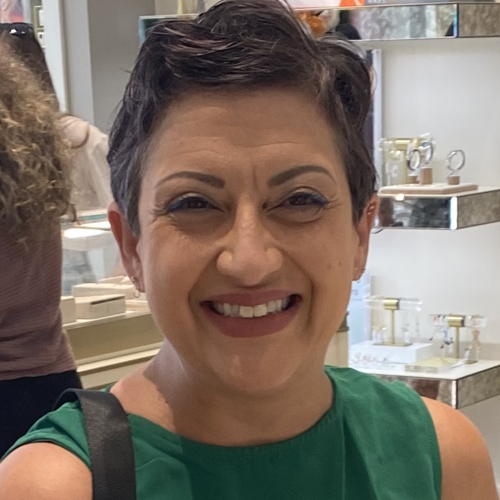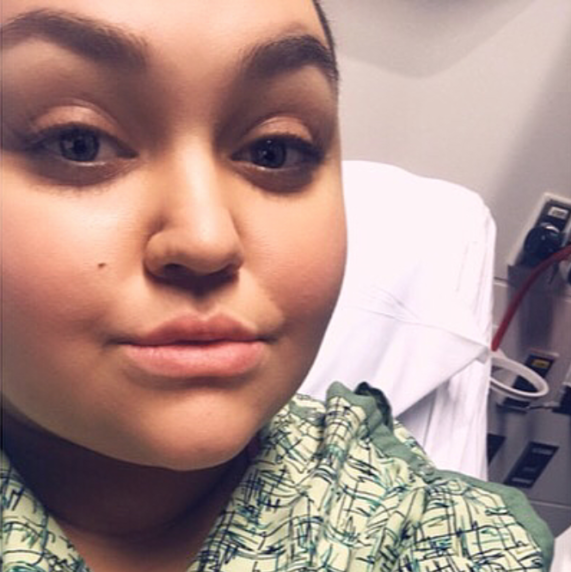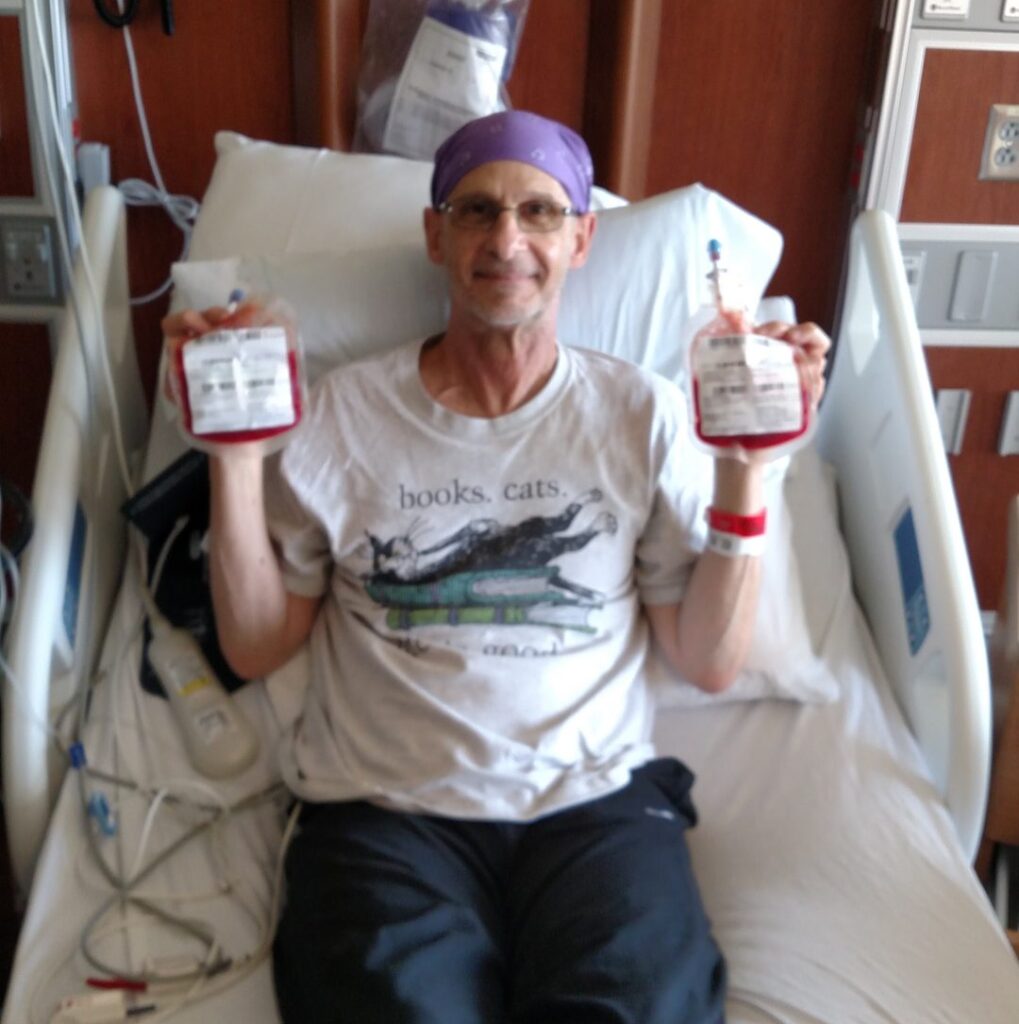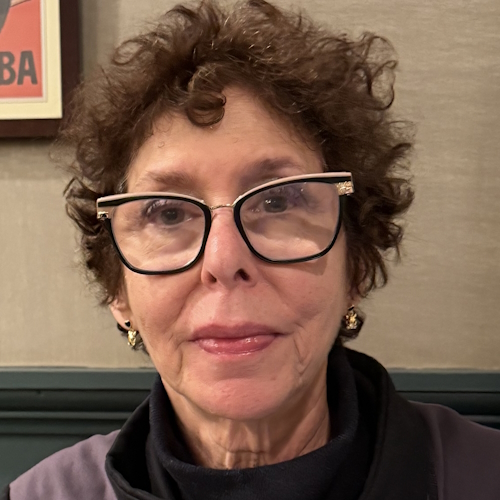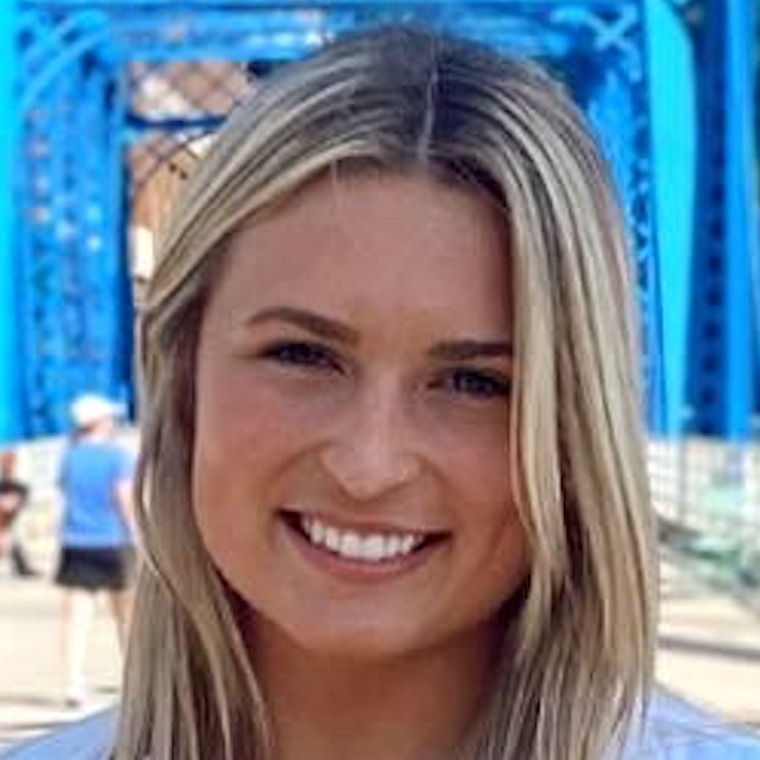Acute Myeloid Leukemia: Learn from the Experiences of Other Patients
Welcome to The Patient Story’s AML home, your central resource for understanding acute myeloid leukemia (AML) through real patient stories, trusted education, and expert insight. Our mission: Real patients. Real stories. Real answers. Whether you’re newly diagnosed and in the middle of induction, moved to consolidation therapy, or managing life during maintenance, you’ll find connection, guidance, and support here.
Explore below to find more about early symptoms, different treatments, side effects and tips on getting through them, as well as impact to quality of life in our in-depth stories spotlighting our incredible AML patients, survivors, thrivers, and care partners.
What is Acute Myeloid Leukemia or AML?
Acute myeloid leukemia (AML) is a cancer of the blood and bone marrow. It happens when the bone marrow makes abnormal white blood cells called myeloblasts, as well as abnormal red blood cells or platelets. AML is the most common type of acute leukemia in adults and usually develops quickly, requiring prompt treatment.
Common Signs and Symptoms of AML
Early symptoms of acute myeloid leukemia may resemble those of the flu or other common illnesses. If you or a loved one experiences any of the following, it’s important to consult a healthcare provider:
- Fever
- Weakness or fatigue
- Weight loss or loss of appetite
- Shortness of breath
- Easy bruising or bleeding
- Petechiae (small red or purple spots under the skin)
- Night sweats
- Bone or joint pain
At first I started noticing some really small bruising. It wasn’t really bad, though. It was on my leg, on my arm. Just little places here and there. My cousin noticed actually that they started to get bigger and more awkward spots, like on my toe, on my finger, or I would get a massive bruise on my stomach, and I didn’t know anything about it.
—Sasha T. on her early symptoms of AML
How is AML Diagnosed?
For many people, the path to an AML (acute myeloid leukemia) diagnosis begins with routine or symptom-driven bloodwork. These tests offer critical clues that something isn’t right and they often spark the next steps in testing and treatment.
Here’s what these tests look for and how they help:
Blood Tests (CBC and Blood Smear)
A complete blood count (CBC) is one of the first tests done and can help lead doctors and pathologists in a number of directions based on the results. It measures the number and types of cells in your blood, including:
- White blood cells (WBCs): May be very high or very low in AML
- Red blood cells (RBCs): Often low (anemia), leading to fatigue or weakness
- Platelets: Usually low, increasing risk of bruising or bleeding
A peripheral blood smear allows doctors to visually examine the shape and maturity of blood cells. In AML, they may see immature white cells (called blasts) circulating in the blood – something that shouldn’t happen under normal conditions.
Bone Marrow Biopsy
If bloodwork suggests AML, a bone marrow biopsy is the next step. It confirms the diagnosis by showing how many leukemia cells are crowding out healthy cells in the marrow. This test also helps determine how aggressive the leukemia is and whether additional testing is needed.
Your bone marrow is the body’s blood cell factory. Marrow is where red blood cells, white blood cells, and platelets are made. In AML, the marrow starts producing large numbers of abnormal white blood cells (called blasts) that don’t function properly and crowd out the healthy cells.
A biopsy allows doctors to:
- Confirm the presence of leukemia cells
- Measure how much of the marrow is taken over by blasts
- Collect a sample for further genetic and molecular testing
Though it sounds intimidating, the biopsy is a short procedure usually done with local anesthesia. It provides the essential information doctors need to plan the right treatment strategy.
Genetic and Molecular (Biomarker) Testing
Once AML is confirmed, doctors run additional tests on the blood or bone marrow sample to learn more about the genetic mutations or molecular markers driving the leukemia.
Some of the most important biomarkers include:
- FLT3: A common mutation that can impact treatment options and relapse risk
- NPM1: Often found with other mutations; may guide chemo vs. targeted therapy
- IDH1 / IDH2: Mutations that can be targeted with newer oral therapies
- TP53: A high-risk mutation that may suggest the need for more aggressive treatment
- KMT2A rearrangements: Typically found in certain age groups or secondary AML cases
These tests don’t just help classify AML into subtypes—they directly guide which therapies are most likely to help.
AML Treatment: What to Expect at Each Phase
The standard of care for treating acute myeloid leukemia involves three main phases: induction, consolidation, and maintenance, which focuses on keeping AML in remission.
Induction Phase
Goal:
This is often the first big step after diagnosis, and it can feel overwhelming. The goal of induction therapy is to hit AML hard and fast to clear out as many leukemia cells as possible and give your healthy blood cells a chance to recover. Think of it as a “reset” for your bone marrow. While it’s an intense period, it’s also the phase where many people first see hope: remission is possible, and this is where it starts.
Common Treatments:
- Intensive Chemotherapy: Usually a combination of cytarabine (“Ara-C”) and an anthracycline, given over about a week. Sometimes called “7+3.”
- Targeted Therapies: For certain genetic markers, medicines like midostaurin may be added.
- Supportive Care: Blood transfusions, antibiotics, and other support to help your body through treatment.
Key Tests:
- Blood Counts: To monitor white blood cells, red blood cells, and platelets.
- Bone Marrow Biopsy: Usually done at diagnosis and after induction to check for remission.
- Biomarker Testing: To identify mutations that could affect treatment choices.
I can’t control how this disease ended up in me, but I can control what I’m going to do now.
—Renee F – Renee’s story of empowerment
Consolidation Phase
Goal:
If induction is the “reset,” consolidation is about making sure the leukemia stays away. Even when you’re in remission, some stray leukemia cells might still be hiding. This phase is like a security sweep with extra rounds of treatment to help keep you in remission. It can be tough, but it’s a crucial step toward long-term health.
Common Treatments:
- High-Dose Chemotherapy: Often with cytarabine or other agents, given in cycles.
- Stem Cell (Bone Marrow) Transplant: For some patients, especially those at higher risk of relapse or with certain genetic markers.
Key Tests:
- Blood Counts: Frequent monitoring, as blood cell levels can drop.
- Bone Marrow Biopsy: To confirm continued remission.
- Pre-Transplant Testing: If a stem cell transplant is planned, additional tests will assess organ function and donor compatibility.
It’s not as intense as induction, but it’s still a heavy-duty dose. For me, I went inpatient. By that point, my body was like, “Oh, okay, so I’m supposed to suppress everything, and then I’ll make some more cells.”
I didn’t have to spend 6 weeks in the hospital. I was very, very fearful of that. I only spent a week in the hospital for my consolidation.
Mary Clare B. – Mary Clare’s story
Maintenance Phase
Goal:
Maintenance is all about keeping you healthy and AML-free. For some, this means ongoing, lower-intensity treatment; for others, it’s regular checkups and bloodwork. This phase is about returning to life—work, family, hobbies—while staying vigilant. It’s a time of hope, but also of adjusting to a “new normal.”
Common Treatments:
- Low-Dose Chemotherapy or Targeted Therapy: Some patients may receive ongoing, lower-intensity treatment.
- Oral Medications: For certain genetic mutations, targeted oral drugs may be used.
- Regular Monitoring: Frequent check-ups and lab work.
Key Tests:
- Blood Counts: To watch for signs of relapse or side effects.
- Bone Marrow Biopsy: Occasionally, to confirm ongoing remission.
- Molecular Testing: To detect minimal residual disease (MRD), which can signal early relapse.
Since my immune system is brand new, I have to take my immunization shots all over again. I’m kind of like a brand new baby.
At this point, I’m about 7 months old, they say. I’ve had 3 different immunization shots all over again, and I’m gonna continue to get them until I’m technically at 5 years old.
— Sasha T. on maintenance and remaking her immune system
Relapse and Clinical Trials
Goal:
If AML comes back, it’s not the end of the road. About 40–50% of adults with acute myeloid leukemia will experience a relapse, but new treatments and clinical trials offer real hope. Many people go on to achieve remission again, sometimes with therapies that weren’t available even a few years ago. This phase is about exploring every option—sometimes, the latest research is exactly what you need.
Common Treatments:
- New Chemotherapy Regimens: Different drugs or combinations from initial therapy.
- Targeted Therapies: Especially if new mutations are found.
- Clinical Trials: Access to promising new treatments not yet widely available.
- Second Stem Cell Transplant: For some patients.
Key Tests:
- Blood Counts and Bone Marrow Biopsy: To assess disease status.
- Molecular Testing: To look for new mutations or MRD.
- Eligibility Assessments: For clinical trials or transplant.
Eventually, I decided if I went the chemo route and it didn’t work out, I would always regret not trying the transplant. And if I did the transplant and it didn’t work out, it would at least feel like I gave it my best shot, so I really committed to the transplant.
— Steve B. AML Patient – deciding on a clinical trial
A Note on Relapse:
While relapse can feel discouraging, remember: research is moving fast, and many patients find new hope in the latest therapies and trials. You are not alone, and there are always next steps to explore.
Acute Myeloid Leukemia Patient Stories
Shelley G., Acute Myeloid Leukemia with NPM1 mutation
Symptoms: Fatigue, rapid heartbeat, shortness of breath, low blood counts
Treatments: Chemotherapy, clinical trial, stem cell transplant
Joseph A., Acute Myeloid Leukemia (AML)
Symptoms: Suspicious leg fatigue while cycling, chest pains due to blood clot in lung
Treatments: Chemotherapy, clinical trial (targeted therapy, menin inhibitor), stem cell transplant
Mackenzie P., Acute Myeloid Leukemia (AML)
Symptoms: Shortness of breath, passing out, getting sick easily, bleeding and bruising quickly
Treatments: Chemotherapy (induction and maintenance chemotherapy), stem cell transplant, clinical trials
Grace M., Acute Myeloid Leukemia
Symptom: Headache that persisted for 1 week
Treatments: Chemotherapy, stem cell transplant
Navigating Life with Cancer
Reacting to a Cancer Diagnosis
It’s cancer. How should you be feeling? That’s a complex question without a…
What Does Cancer Feel Like?
Hear from cancer patients in their own words about what cancer felt like…
Cancer Patient Advocate
Read advice from real cancer survivors about how to advocate for yourself during…
What to Say to Someone With Cancer | The Patient Story
There’s no clear way to know what is best to say to someone with…
How To Tell Your Family and Friends You Have Cancer
If you’ve been diagnosed with cancer and are unsure how to go about…
My Spouse Was Diagnosed With Cancer | The Patient Story
Marriage is wonderful, but a cancer diagnosis can create a disconnect for some…



